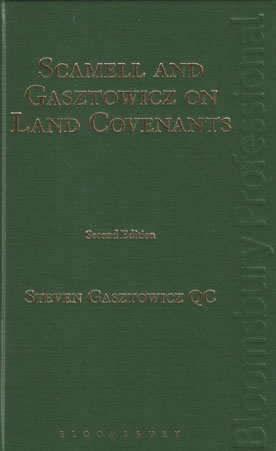We are now closed for the Christmas and New Year period, returning on Monday 5th January 2026. Orders placed during this time will be processed upon our return on 5th January.

Wildy's Book of the Month: April 2018
Scamell and Gasztowicz on Land Covenants, 2nd edition brings the material up to date exploring the types of covenants practitioners have to contend with, analysing their relevance to property and planning transactions and seeking to offer practical advice in this complex and far reaching area of law.
The second edition will introduce coverage of positive covenants and planning covenants which no other title on the market currently offers.
A covenant can be either positive or negative. It is important to understand the difference between positive and negative covenants as not all covenants are enforceable and different rules on enforceability apply depending on whether the covenant is positive or negative.
Dealing with the impact of Covenants on land affects most conveyancing transactions and is a complex and broad area of law for property lawyers to contend with. The volume of case law on this topic is extensive. Scamell and Gasztowicz on Land Covenants, 2nd edition is divided into two parts: Part I – Restrictive Covenants; Part II – Positive and Negative Covenants.